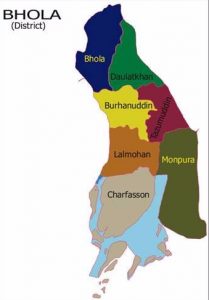On August 7, 2015, a ranger found the chewed-upon body of a man near a hiking trail in Yellowstone National Park, not far from one of the park’s largest hotels. The deceased was soon identified as Lance Crosby, 63, from Billings, Montana. He had worked seasonally as a nurse at a medical clinic in the park and been reported missing by co-workers that morning.
Investigation revealed that Crosby was hiking alone on the previous day, without bear spray, and ran afoul of a female grizzly with two cubs. The sow, after killing and partially eating him (not necessarily in that order), and allowing the cubs to eat too, cached his remains beneath dirt and pine duff, as grizzlies do when they intend to reclaim a piece of meat. Once trapped and persuasively linked to Crosby by DNA evidence, she was given a sedative and an anesthetic and then executed, on grounds that an adult grizzly bear that has eaten human flesh and cached a body is too dangerous to be spared, even if the fatal encounter wasn’t her fault. “We are deeply saddened by this tragedy and our hearts go out to the family and friends of the victim,” said Park Superintendent Dan Wenk, a reasonable man charged with a difficult task: keeping Yellowstone safe for both people and wildlife.
The carcass of a bison that drowned in the Yellowstone River became a feast for an alpha female of the Mollie’s wolf pack and her two year-old offspring. Bringing down a live bison is dangerous; Yellowstone wolves far more often target elk, which make up 85 percent of their winter diet.
Grizzly bears, clearly, can be dangerous animals. But the danger they represent should be seen in perspective. Lance Crosby’s death was just the seventh bear-caused fatality in the park during the past hundred years. In the 144 years since Yellowstone was established, more people have died there of drowning and of scalding in thermal pools, and of suicide, than have been killed by bears. Almost as many people have died from lightning strikes. Two people have been killed by bison.
The real lesson inherent in the death of Lance Crosby, and in the equally regrettable death of the bear that killed him, is a reminder of something too easily forgotten: Yellowstone is a wild place, constrained imperfectly within human-imposed limits. It’s filled with wonders of nature—fierce animals, deep canyons, scalding waters—that are magnificent to behold but fretful to engage.
Wilderness contained, nature under management, wild animals obliged to abide by human rules—it’s the paradox of the cultivated wild.
Most of us, when we visit Yellowstone, gaze from our cars at a roadside bear, stand at an overlook above a great river, stroll boardwalks amid the geyser basins. We experience the park as a diorama. But walk just 200 yards off the road into a forested gully or a sagebrush flat, and you had better be carrying, as Lance Crosby wasn’t, a canister of bear spray. This is the paradox of Yellowstone, and of most other national parks we have added since: wilderness contained, nature under management, wild animals obliged to abide by human rules. It’s the paradox of the cultivated wild.
Question: Can we hope to preserve, in the midst of modern America, any such remnant of our continent’s primordial landscape, any such sample of true wildness—a gloriously inhospitable place, full of predators and prey, in which nature is still allowed to be red in tooth and claw? Can that sort of place be reconciled with human demands and human convenience? Time alone, and our choices, will tell. But if the answer is yes, the answer is Yellowstone.
On March 1, 1872, President Ulysses S. Grant, compliant but no great advocate of scenic protection himself, signed a bill creating the world’s first national park. That law specified “a public park or pleasuring-ground for the benefit and enjoyment of the people.” Within this park “wanton destruction of the fish and game,” whatever “wanton” might mean, as well as commercial exploitation of such game, was prohibited. The boundaries were rectilinear, although ecology isn’t. The paradox had been framed.
Rutting bison joust in Yellowstone’s Lamar Valley. More than 4,500 bison roam free in the park. They’re descendants of a few dozen animals given sanctuary more than a century ago, rescuing the species from extinction.
At the outset, the park was an orphan idea with no clarity of purpose, no staff, no budget. Congress seemed to lose interest as soon as the ink of Grant’s signature dried. The idea that the park should protect wildlife as well as geysers and canyons was an afterthought. Yellowstone became a disaster zone. Market hunters operated brazenly in the park, killing elk, bison, bighorn sheep, and other ungulates in industrial quantities, until the U.S. Army was brought in to handle enforcement. An elk hide was worth six to eight dollars, serious money, and a man might kill 25 to 50 elk in a day. Antlers littered the hillsides. Wagon tourists came and went unsupervised, at low numbers but with relatively high impact, some of them vandalizing geyser cones, carving their names on the scenery, killing a trumpeter swan or other wildlife for the hell of it reports national -geographic.com.




